Far Breton, or far aux pruneaux, is a rich, French custard studded with brandy soaked prunes. A traditional comfort during cold weather, it’s a natural companion to hot coffee after a Sunday lunch.
This far Breton recipe embraces winter’s demand for cozy with the consolation of brown butter and the solace of vanilla. But even with macerating the prunes and browning the butter, far Breton is simple and quick to make; ready in just over an hour.
Far Breton originates, as you might guess, in Brittany, where it goes by farz fourn. The northwest region of Bretagne is famous for its butter, sea salt, and pastries that take advantage of these ingredients, such as sablés bretons and kouign amann.
However, it has become a fixture not just in Brittany, but also in homes and bakeries all across France. In fact, while prunes macerated in brandy are nowadays a characteristic component of far, they’re actually a non-Breton addition.
It’s said that fishermen from Brittany traded their catch for Agen prunes and that’s how they made their way into the custard. And the only thing that could make pruneaux d’Agen better would be to imbibe them with brandy from the neighboring Armagnac region.
But you can save the expensive appellation of origin for sipping. Almost any brandy will do. I still stuck with a French brandy nonetheless.
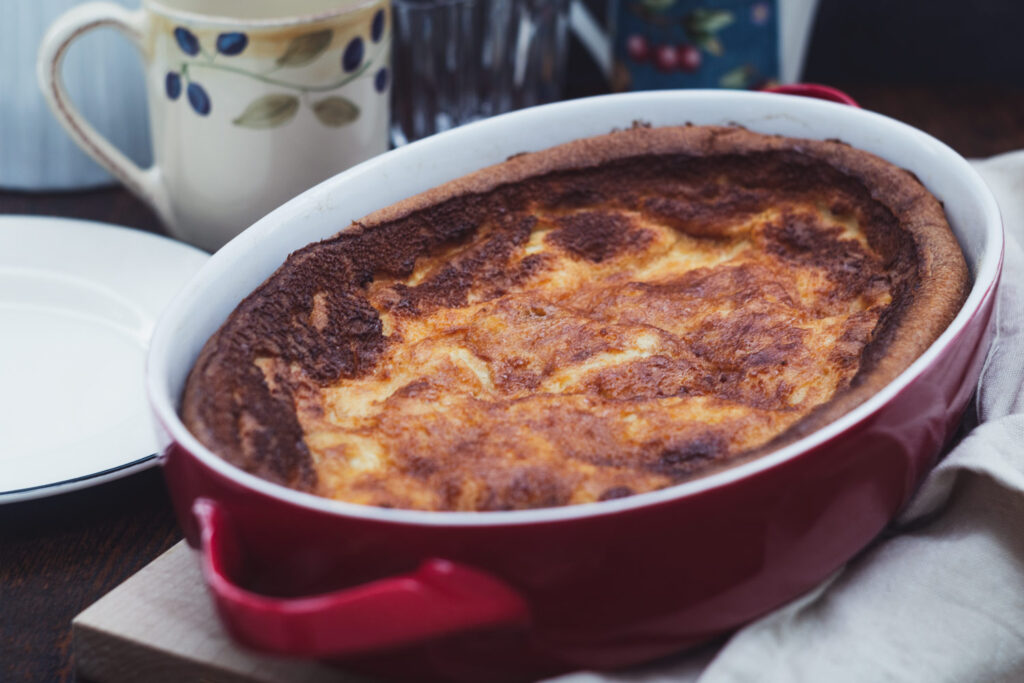
Far Breton vs Clafoutis
Far Breton is very similar to flan, custard, or clafoutis. Far and clafoutis are both egg-based custards with the addition of flour. Clafoutis originates from Limousin and is most often made made with cherries or other fresh fruits. Far Breton is from Bretagne, has a richer, smoother texture, and is most often made with dried fruits, such as prunes or raisins.
Far Breton History:
Far Breton dates back to the 18th century, but it was nothing like the sweet, prune-studded far aux pruneaux that it is today. Far Breton was originally a savory dish made with buckwheat flour to accompany roasts and hearty meals. In Breton, far means flour or meal and fourn means oven.
The recipe evolved to reflect the bourgeois tastes of the upper class, adding more eggs, more butter, and processed sugar and flour. But today it’s a humble, French family favorite, even outside of Bretagne.

Tips for Making Far Breton:
- I like to prepare the prunes the day before baking far Breton so they have more time to soak in the brandy. Combine the prunes and the brandy in a small saucepan and set over medium heat. Let simmer until the prunes absorb most of the brandy. If you are preparing them the day before, transfer the prunes to a container with a tight-fitting lid, but leave ajar until they have cooled. Then, secure the lid until ready to use.
- To make the brown butter, slowly heat the butter in a light-colored saucepan over medium-low heat. Using low heat helps keep you in control of the toasting, as browned butter can very quickly turn from perfectly golden to black and astringent. And using a light-colored saucepan makes it easier to monitor the color as the butter browns.
- At first, the butter will boil, evaporating most of the water. Afterwards, the butterfat will start frying the milk solids, initiating the Maillard reaction. When the milk solids are golden brown and fragrant, take the pan off the heat and let it cool.
- Be sure to use room temperature ingredients. Otherwise, the cold eggs and milk will harden the butter and break the emulsion.
- To mix the batter, combine the flour, sugar, and salt in a mixing bowl. Make a well in the center of the flour mixture and add the eggs to the center of the well. Beat the eggs with a whisk, gradually dragging in a little bit of flour at a time from the edge of the well, working your way outward toward the edge of the bowl. By gradually working in the flour, you prevent as many lumps from forming as if you tried to mix the batter all at once.
- Whisk in the milk and vanilla extract a splash at a time, whisking until the batter is smooth after each addition. Again, this ensures a uniform batter.
- Finally, add the brown butter last and whisk until it emulsifies into the batter.
- When you’re ready to bake, pour the batter through a fine mesh sieve into the baking dish to guarantee a lusciously smooth custard.
- The custard is done when it has risen and turned a deep golden color. When you give it a gentle shake it should still have a slight wobble in the center.
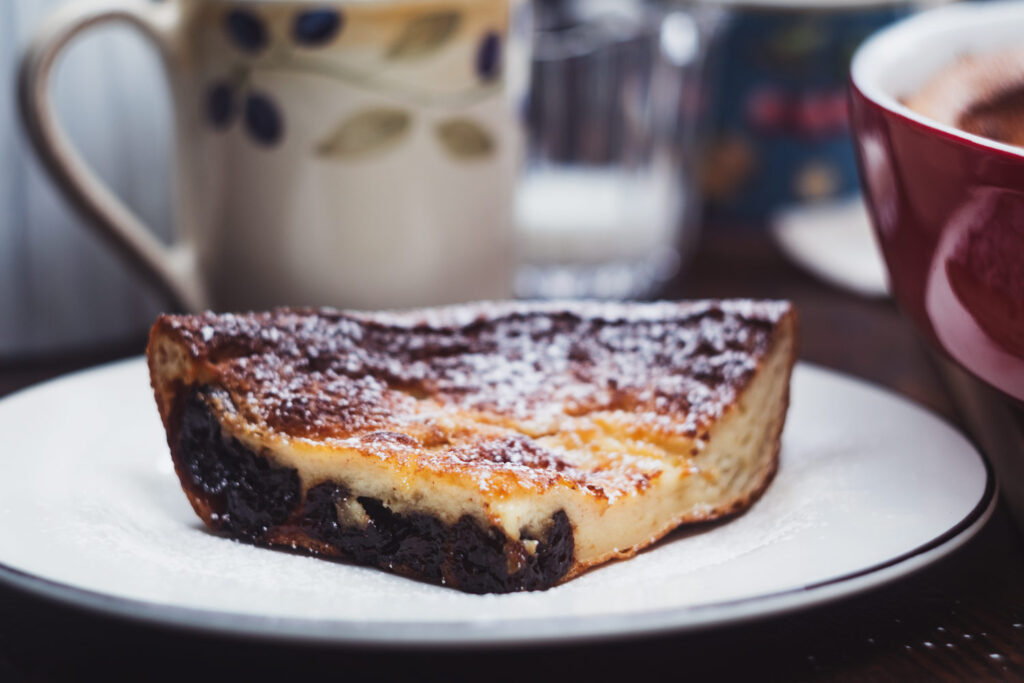
Ingredients:
225g prunes, pitted
60g unsalted butter
90g plain flour
100g granulated sugar
1/8 teaspoon salt
3 large eggs
480ml whole milk
1 teaspoon vanilla extract
8 ounces prunes, pitted
1/4 cup unsalted butter
3/4 cup plain flour
1/2 cup granulated sugar
1/8 teaspoon salt
3 large eggs
2 cups whole milk
1 teaspoon vanilla extract
1. Preheat the oven:
Preheat the oven to 200°C (400°F). Generously butter the bottom and sides of a 6-cup (1.5L) baking dish.
2. Soak the prunes in brandy:
Heat the prunes and the brandy in a small saucepan over medium heat, stirring occasionally, until most of the liquid is absorbed. Cover the pan, remove from the heat, and let cool.
The prunes can be prepared up to 2 days in advance.
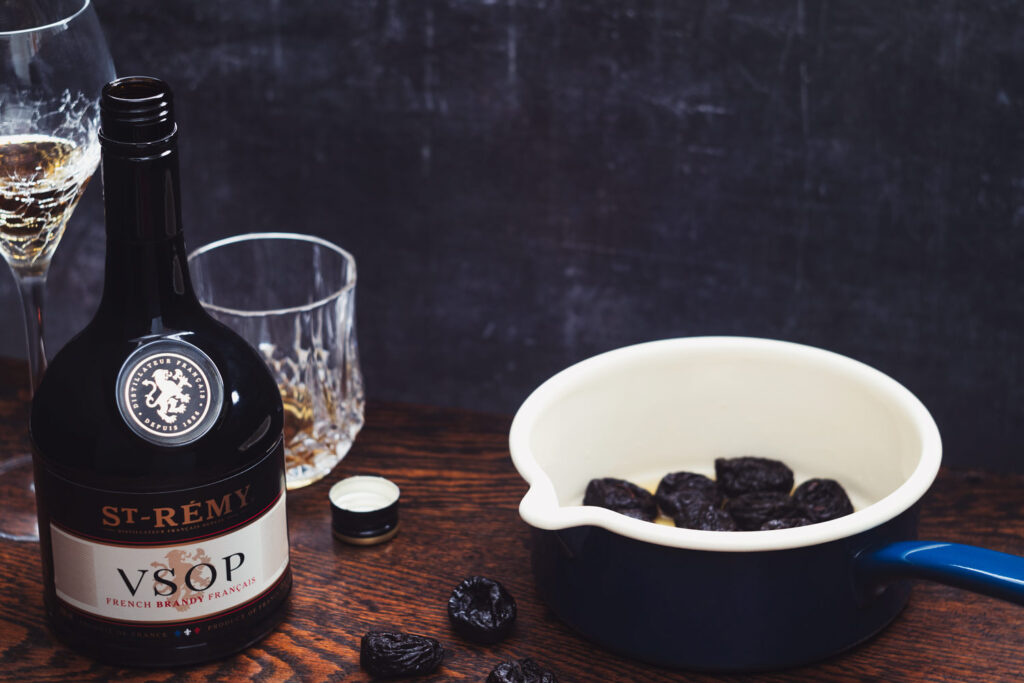
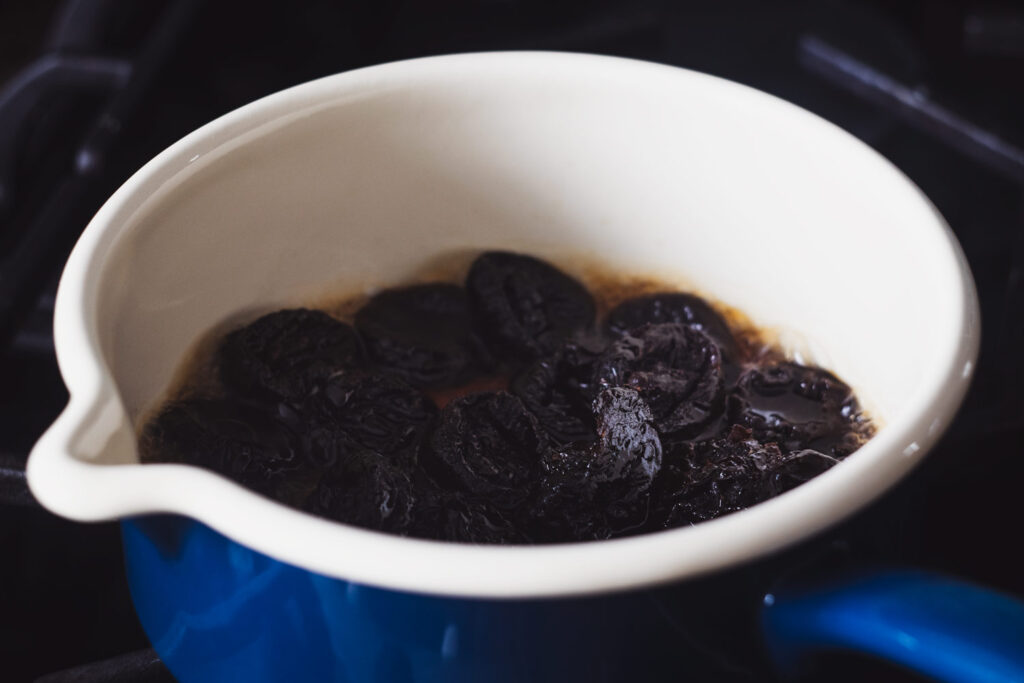
3. Brown the butter:
In another small saucepan, melt the butter over medium-low heat. Using a light-colored saucepan will help you gauge the color of the butter as it browns. Once the butter is melted, swirl the pan occasionally to brown evenly. As soon as the milk solids at the bottom of the pan turn golden brown, take the pan off the heat to cool.
4. Combine the flour and sugar:
Whisk together the flour, sugar, and salt in a large mixing bowl.
5. Add the eggs:
Make a well in the flour mixture and add the eggs to the center of the well. Use a whisk to beat the eggs, gradually drawing flour from the inside walls of the well. Whisk until smooth.
Mixing in the eggs by making a well prevents lumps from forming in the batter.

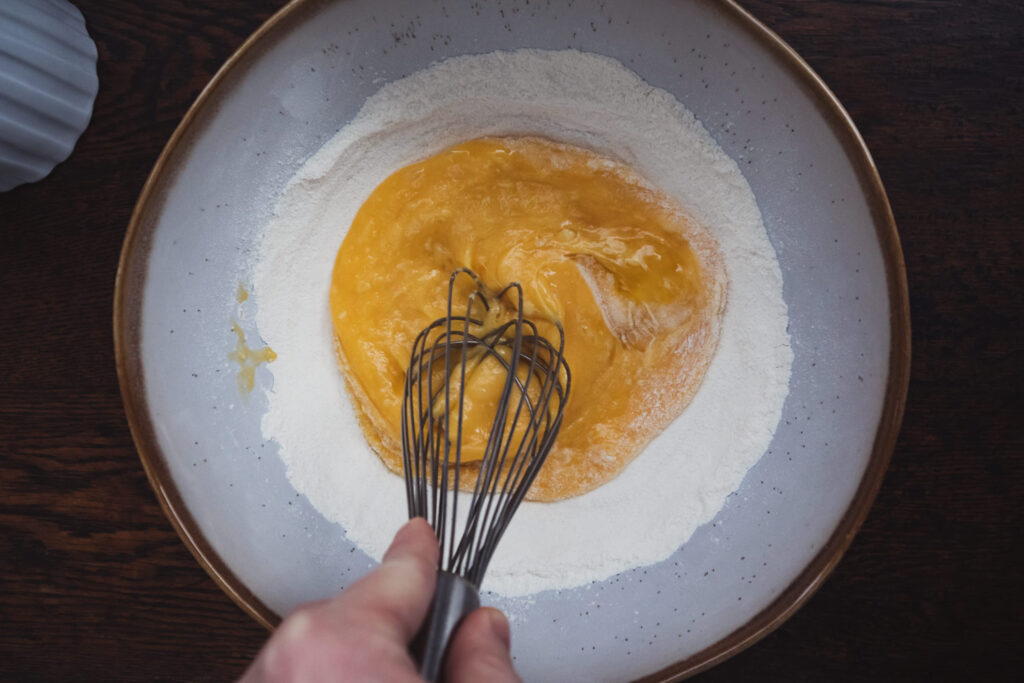
6. Add the milk and vanilla:
Whisk in the milk, a splash at a time, waiting until fully incorporated before adding more. Then stir in the vanilla extract.

7. Pour in the butter:
Finally, pour in the butter and whisk until fully combined.
8. Transfer to the baking dish:
Scatter the prunes in the baking dish. Pour the batter through a fine sieve into the baking dish.

9. Bake:
Bake the flan in the preheated oven for 35 to 45 minutes (depending on the baking dish), or until risen and deep golden. When you give it a gentle shake it should still have a slight wobble in the center.
Serve slightly warm or at room temperature and with coffee.
Notes:
Storage:
Far Breton will keep in the refrigerator for up to 3 days.
Can I Freeze Far Breton?
Custards and flans do not freeze well, they tend to separate.
Far Breton without Alcohol
To make far Breton alcohol free you could poach the prunes in tea, then drain the tea before adding to the batter.

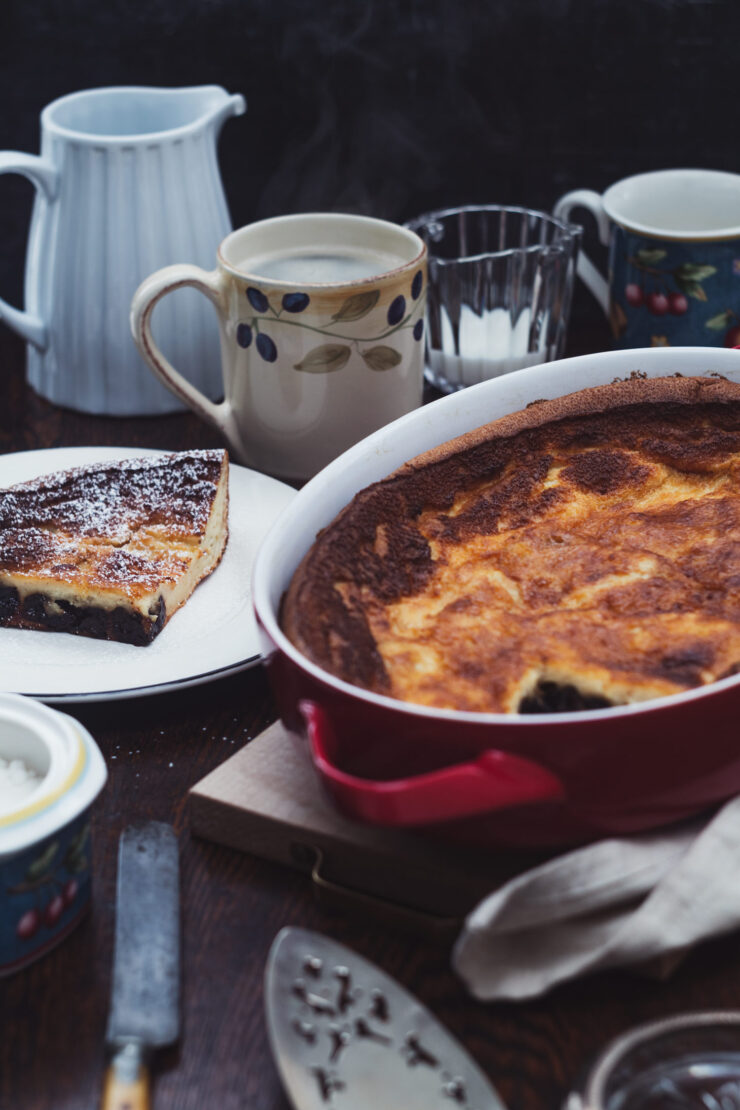
No Comments